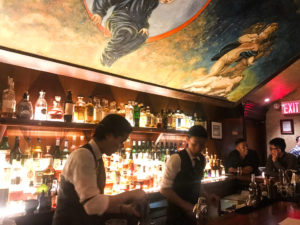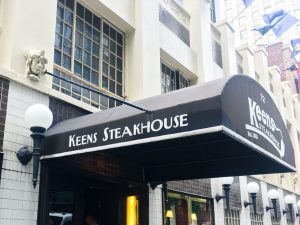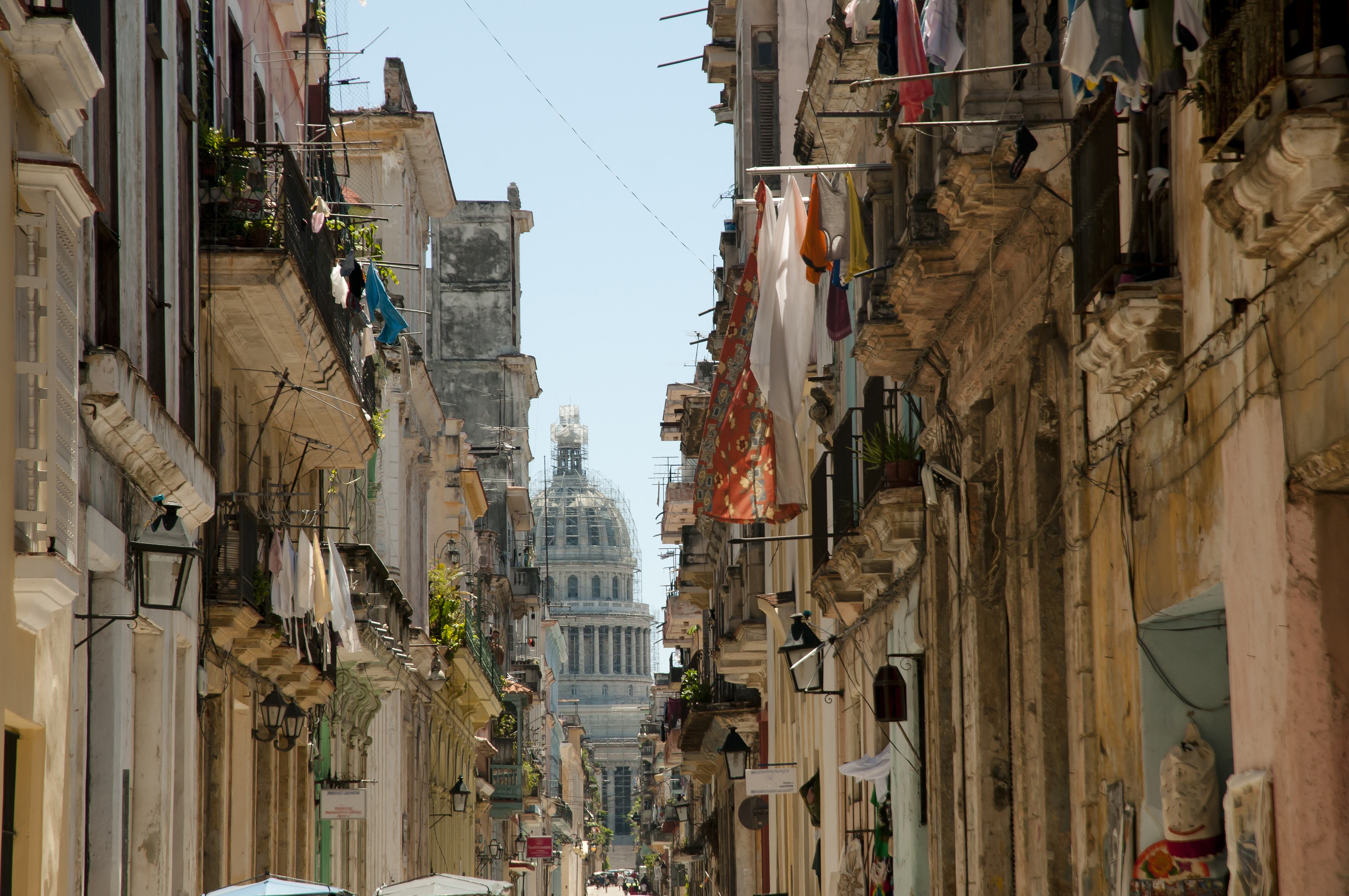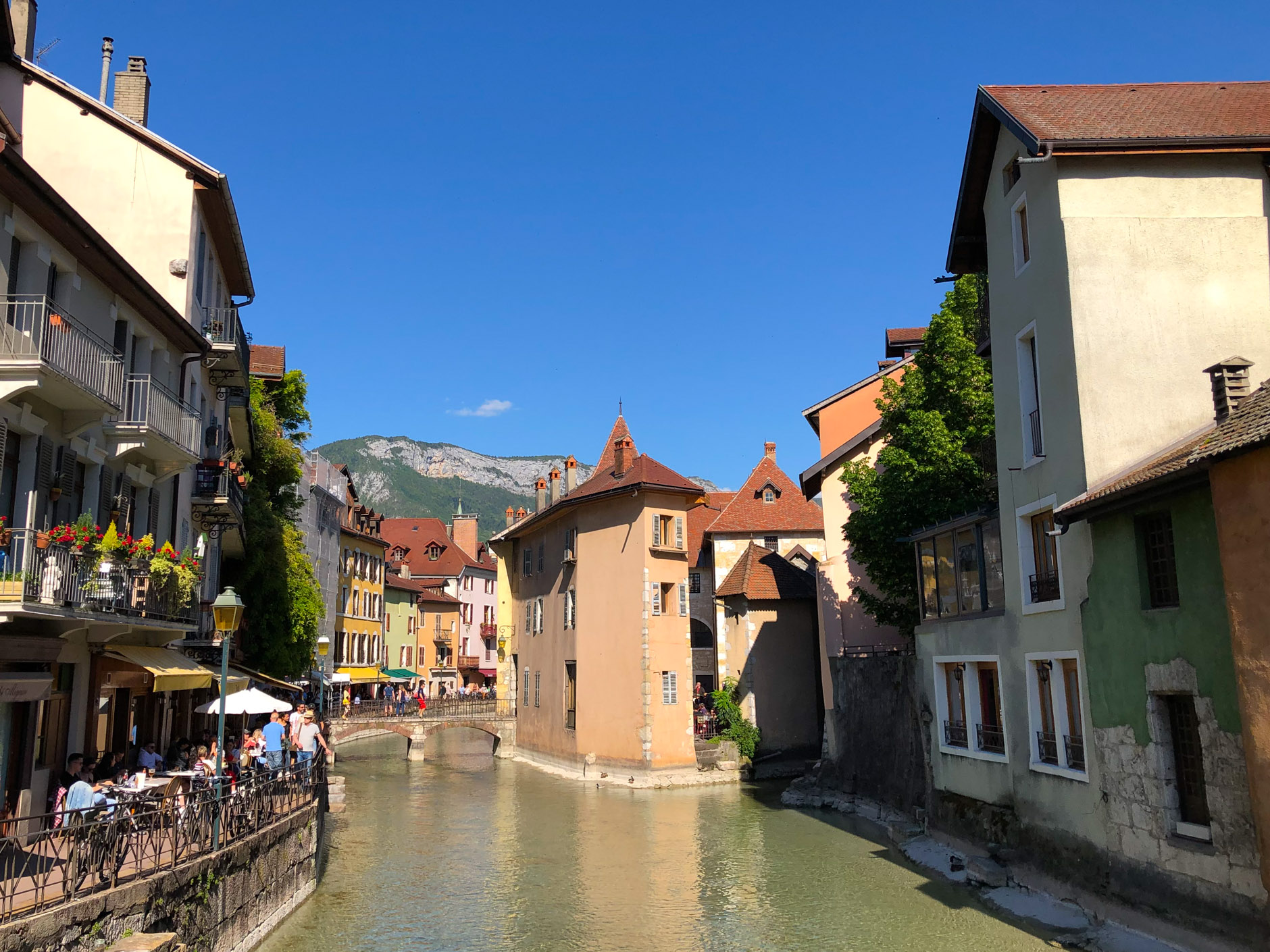Sometimes I dream of New York City. I dream of the cold winter days I spent taking the downtown ‘1’ train listening to the Inside Llewyn Davis soundtrack. I dream of walking down 8th Avenue at night, ice cream cone in hand, watching the heat rise from the streets illuminated by the blinking traffic lights. It did not always seem that way. When I was living there, the city always seemed too overwhelming, grimy and dirty. Only after I left could I see that New York could never be what it is without the noise, crime and general chaos. One could say the city is just like its inhabitants: self-righteous people unafraid to show their rough side, perhaps even defined by them. It is the Liam Gallagher of cities.

Peter Luger Steak House
Then again, I have come to realise that it is incredibly difficult to write about New York City. As the centre of world capitalism, the city has frustratingly few secrets and anything good has probably already been discovered. Very little that I want to say has not already been mentioned by a writer before me. While a Londoner or Parisian might have something or some place to call their own, a New Yorker shares the same life as many others like them. New York is cold and unrelenting; it breaks you down and makes you conform to it. It feels like there is a right answer about everything here, not just opinions. For a city of this size, most people’s top ten lists (of food, things to do, romantic spots or places to avoid) converge, almost as if they were compiled by the same person. London’s many newspapers support an ecosystem of food critics each with a different degree of angst, but the monopoly of the New York Times has amplified the opinions of resident food writer Pete Wells. If Mr Wells decides that a restaurant is no longer en vogue, as he did with Peter Luger Steak House, then it is so. It just is.
While New Yorkers boast endlessly to foreigners about the greatness of their city, they simultaneously engage in a game of top trumps with their fellow denizens – like Monty Python’s four Yorkshiremen, endlessly trying to outdo each other with anecdotes about how difficult it is to live there. And boy, is there much to whine about. The subway never runs on time, especially on weekends, and the derelict carriages make even London’s Piccadilly Line trains look well-maintained. Rents are at an all-time high while gentrification is destroying historic neighbourhoods in Harlem and downtown Brooklyn. Furthermore, there is the inescapable fact that the city is in the United States, where the government manages to be too big and too small at the same time. It is no small wonder that New Yorkers show their frustration in public; they are the most irritable people in the world, always agitated and in a hurry to get off the busy streets.
Something about the cosmopolitan nature of its history means that almost any kind of ‘ethnic’ food is available
New York is also a city you will inevitably hear about before you arrive. It features in so many movies and songs it is possible to live there vicariously without ever setting foot in it. Perhaps then, the best way to see New York is through a screen. Want to experience Manhattan in the 60s? Watch Mad Men. Curious how the 1% lives? Try Billions. And let us not forget Friends, How I Met Your Mother, Gossip Girl and Sex and the City. If you really hate the city, try watching every disaster movie ever made. Alien attacks in films have become so ubiquitous that if aliens really descended upon the city, the average resident might probably be concerned with delays on the A train.

Sushi preparation at Nakazawa
All my American friends told me that the food in New York was the best in the world. It did not matter where the conversation took place, the food in New York was somehow just better. Something about the cosmopolitan nature of its history means that almost any kind of ‘ethnic’ food is available – Greek, Ukrainian, and Lebanese restaurants fight for custom alongside the more usual Chinese and Mexican joints. Yet most of these foreign foods have been Americanised, their spiciness toned down and smothered with high-fructose corn syrup, which I have come to realise is the American Dream in its purest liquid form. Italian restaurants in New York alternate between fronts for the Mafia and joints run by Italians exiled from Italy for crimes against pasta. Norma in Midtown East and Pisticci on the Upper West Side are notable exceptions, and for a proper Italian American experience, Mario Carbone’s eponymous Carbone’s pasta in Vodka Sauce is a must-try. Even American food varieties suffer from commodification; all the Southern Soul Food restaurants that I have been serve the idea of Soul Food more than anything else, and none of them are unable to fry a better chicken than Popeye’s fast food chain.
At the very high end, the old-money obsession with Old World French fine-dining has given way to an even more obsessive fascination with Japan and omakase menus. While La Grenouille, Daniel and Jean-Georges continue to be fully booked every day, it is the tiny Japanese restaurants that have waiting lists that extend into the new year. Even though most bankers I’ve met cannot pronounce omakase properly, they love the Japanese restaurants, nonetheless. There has been an exodus of top-end Japanese chefs from Ginza, who have left the motherland in droves to New York. Nakazawa and Ginza Onodera are but two of the many exclusive and intimate sushi restaurants that have popped up in recent years. Beyond sushi, noodle and yakitori restaurants are also gaining traction. Sakagura, a restaurant in the basement of an office building near Grand Central station serves handmade soba noodles for lunch and transforms into a bustling sake bar at night. Raku, an Udon restaurant in Greenwich Village, serves Akita-style Udon better than most of the joints I’ve tried in Tokyo.

Angel’s Share
The Japanese craze extends to bartending. Angel’s Share on the Lower East Side is staffed entirely by Japanese bartenders. Over a glass of Speak Low, a Bacardi Legacy-winning rum cocktail, one of them told me how with tips included, the pay was at least twice that of Tokyo, and rowdy Americans were easier to serve than the solemn, exacting salarymen back home. The bar scene is probably the most developed of any city, with some of the best bars in the world hailing from New York. Downtown, the Dead Rabbit Irish pub serves up an ever-rotating list of innovative cocktails over three floors of a converted townhouse, and the Library Bar at the Nomad Hotel is one of the most sophisticated places in the world for a tipple. Even though prohibition is a distant memory, numerous bars in the city like PDT, Employees Only and Attaboy still operate as speakeasys, perhaps to give hipsters a false sense of exclusivity and privilege one rarely finds in New York. Speaking of hipsters, Brooklyn is home to one of the newest whiskey distilleries in the world, King’s County. Hidden in a former industrial estate, the distillery is open to tours and has a well-stocked tasting bar. On my first visit of many, I nearly failed to make it home.
Some cities are just inaccessible. Not New York
In globalised, capitalist, perfect-information New York, I was fortunate to be able to find spaces for myself. My Italian friend Tom and I would always wind up eating dinner at Koronet, a local pizzeria popular with students on the corner of 110th St and Broadway. We would have huge, greasy, unremarkable slices of pizza, share a tinfoil tray of passable garlic knots and wash it all down with diet coke in the extra-large cups that Mayor Bloomberg failed to ban. Both of us knew what pizza was supposed to taste like – heck, the chef at Koronet would lose to us hands down in a pizza-making competition. But we went back there week after week without fail, because somehow it was always a really fun thing to do. Not far from where I lived, there is a little hole-in-the-wall bourbon bar called The Hamilton. The Sunday bartender was once a customer, but spent so much time and money drinking there he started working there to cover the tab. As I had done exactly the same thing in a different bar in a different city, we had a common understanding. That meant I was able to bring the comically large Koronet pizzas to eat at the bar.

Keens
I know a chap who has lived in Tokyo pretty much all his life, but ask him where he’s from and he’ll say Frankfurt without skipping a beat. Some cities are just inaccessible. Not New York. If you’ve seen a man pole dance on the subway you’ve been here long enough to claim you’re a New Yorker. Some people might disagree, but you’ll just have to shout louder. That’s what the city does: it irrevocably changes you. My first week there I dined at Keens, one of the best, if not the best, steakhouses in the city. The portions were so large I had to have all the sides to go. On my last day I stopped by Keens for an emergency steak en route to JFK, where I promptly finished everything with room to spare for dessert, which was a massive cheesecake. I even eat like a New Yorker now.
My audio guide to the city was the music of Paul Simon, who I saw perform his last ever gig in his hometown in Flushing Meadows, Queens, New York. There are no longer prostitutes on Seventh Avenue, the 59th Street Bridge is not a groovy place in the least, and you can’t get all the news you need from the weather report. New York, as I soon discovered, was not always an enjoyable place to be. Like The Boxer, I would hang up my winter clothes and wish I was gone. And yet I stayed. I’m glad I did, not because it made me a better person or fed me like a king, but because living there made me realise I could possibly feel at home in any city in the world. As the philosopher Sinatra once said, if you can make it here you can make it anywhere, and only New York could make me feel that.






